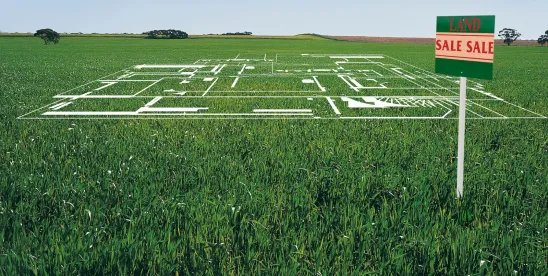Effective February 13, 2024, prospective purchasers and ground tenants of commercial and industrial property seeking liability protections under the Comprehensive Environmental Response, Compensation, and Liability Act (CERCLA) must ensure that their Phase I Environmental Site Assessment (Phase I ESA) complies with ASTM International’s E1527-21, Standard Practice for Environmental Site Assessments: Phase I Environmental Site Assessment Process (ASTM E1527-21). Such purchasers and ground tenants can no longer rely on the older ASTM E1527-13 standard. ASTM International is one of the world’s largest international standards- developing organizations, publishing almost 13,000 ASTM standards each year.
WHY IT’S IMPORTANT FOR PHASE I ESAS TO FOLLOW THE UPDATED ASTM STANDARD
Phase I ESAs serve two general purposes in environmental due diligence. They provide an overview of known and potential environmental issues at or affecting real property, and they fulfill one of the key statutory requirements necessary to qualify for environmental liability protections under CERCLA and analogous state laws.
Under CERCLA, current owners and operators of real property face strict, joint and several liability for response costs associated with existing contamination at a property, i.e., a new owner or operator can be held responsible for 100% of the property cleanup costs, even when they did not cause or contribute to the contamination. This potential liability can discourage property transfers and undermine the productive use of otherwise valuable property.
Certain protections, referred to as landowner liability protections (LLPs), are available under CERCLA to those who qualify as an innocent landowner, a bona fide prospective purchaser (which may include a ground tenant), or a contiguous property owner. To qualify for one of these LLPs, a prospective owner or tenant must perform “all appropriate inquiries” into the previous ownership and uses of the property in accordance with generally accepted good commercial and customary standards and practices, as defined under CERCLA (AAI). AAI must be completed within one year prior to the date of acquisition of the property, with certain components conducted or updated within six months prior to acquisition.
In 2005, the U.S. EPA (EPA) adopted the All Appropriate Inquiries Rule (AAI Rule) outlining the standards and practices for conducting AAI under CERCLA and specifying which existing industry standards comply with AAI requirements. On December 15, 2022, EPA amended the AAI Rule to allow use of ASTM E1527-21 and added a one-year sunset period to phase out use of the older ASTM E1527-13. As of February 13, 2024, ASTM E1527-13 no longer complies with EPA’s AAI Rule. ASTM E2247-16 may also be used for properties that qualify as “forestland” or “rural property,” designations that may apply to certain properties acquired for solar and/or wind projects. On March 12, 2024, EPA issued a proposed rule to replace E2247-16 with an updated standard for forestlands and rural properties, E2247-23, although the exact timing for that change is uncertain until EPA issues its final rule. Although a party may attempt to qualify for LLPs by complying directly with the AAI requirements as listed in the federal regulations, the most common and commonly accepted practice for qualification is to obtain a Phase I ESA prepared in accordance with an EPA-approved ASTM standard.
KEY CHANGES IN THE NEW STANDARD FOR PHASE I ESAS
As reported in previous updates and summarized below, ASTM E1527-21 includes several key changes from its predecessor, ASTM E1527-13.
NEW DEFINITIONS FOR RECS, CRECS, HRECS, AND OTHER KEY TERMS
ASTM E1527-21 modifies the definitions of key terms used in the Phase I ESA, including Recognized Environmental Conditions (RECs), Historical Recognized Environmental Conditions (HRECs), and Controlled Recognized Environmental Conditions (CRECs). The definitions are important because items identified as RECs can become key environmental considerations in a real estate transaction (including refinancing), potentially signaling open issues and associated uncertainty regarding the presence or potential presence of hazardous substances or petroleum products. In contrast, HRECs and CRECs generally denote something less onerous – past releases that have been adequately addressed but which, in the case of CRECs, may require implementation and/or compliance with certain controls (e.g., a site cap and/or environmental deed restriction imposing restrictions on use of the property).
ASTM E1527-21 also includes new definitions and/or clarifications for other key terms, including “significant data gap,” “property use limitation,” and “land title records.”
MORE EXTENSIVE HISTORICAL RESEARCH
ASTM E1527-21 imposes potentially more extensive requirements for research into the historical uses of the subject property and adjacent properties, which may increase the time and cost required to complete the Phase I ESA. At a minimum, environmental professionals must review certain “standard historical resources” if they are reasonably ascertainable, likely to be useful, and applicable to the subject property. Those resources must also be used to evaluate historical uses of adjacent properties if they are likely to be useful in identifying potential RECs for the subject property. Additional historical resources must be reviewed for both the subject property and adjoining properties if the environmental professional determines that additional review is warranted in order to identify RECs for the subject property. Notably, ASTM E1527-21 adds retail as one of the land use types (along with industrial and manufacturing) that may require more in depth review of historical resources to identify specific uses of potential concern (e.g., a drycleaner).
EMERGING CONTAMINANTS (INCLUDING PFAS) MAY BE ADDRESSED AS NON-SCOPE ITEMS
ASTM E1527-21 specifically addresses substances not yet defined as hazardous substances under CERCLA, including emerging contaminants such as per- and polyfluoroalkyl substances (PFAS), which may be evaluated as “non-scope” considerations in a Phase I ESA. Following publication of ASTM E1527-21, the EPA listed two PFAS - perfluorooctanoic acid (PFOA) and perfluorooctanesulfonic acid (PFOS) - as CERCLA hazardous substances. Those substances must now be evaluated as part of a Phase I ESA. Therefore, depending on the overall objectives of the party relying on the Phase I ESA and any expected need to rely on the Phase I in the near term future, it may be wise to include evaluation of those substances as a non-scope consideration in the Phase I ESA.
OTHER CHANGES
ASTM E1527-21 includes additional requirements and/ or clarifications for other issues as well, including: (1) the Phase I ESA user’s responsibility to review land title records and judicial records for environmental liens and Activity and Use Limitations; (2) the “shelf-life” of a Phase I ESA; (3) site reconnaissance requirements; and (4) several updated or new appendices, including the new “Additional Examination of the Recognized Environmental Condition Definition and Logic.”
ADDITIONAL REQUIREMENTS NECESSARY TO SECURE ENVIRONMENTAL LIABILITY PROTECTIONS
Fulfilling CERCLA’s AAI requirements checks only one of the boxes necessary to qualify for the LLPs. Other obligations continue even after acquisition, including compliance with applicable land use restrictions, not impeding the effectiveness or integrity of institutional controls employed in connection with a response action, providing full cooperation, assistance, and access to those conducting response actions or natural resource restoration, and taking reasonable steps to stop any continuing release, prevent threatened future release, and prevent or limit any human, environmental, or natural resource exposure to previously released hazardous substances. In addition, the scope and requirements for securing analogous environmental liability protections available under state laws vary. Prospective owners and tenants should work with experienced consultants and qualified legal counsel to ensure compliance with the AAI Rule and satisfaction of other requirements necessary to qualify for LLPs and analogous environmental liability protections under state law.




 />i
/>i

